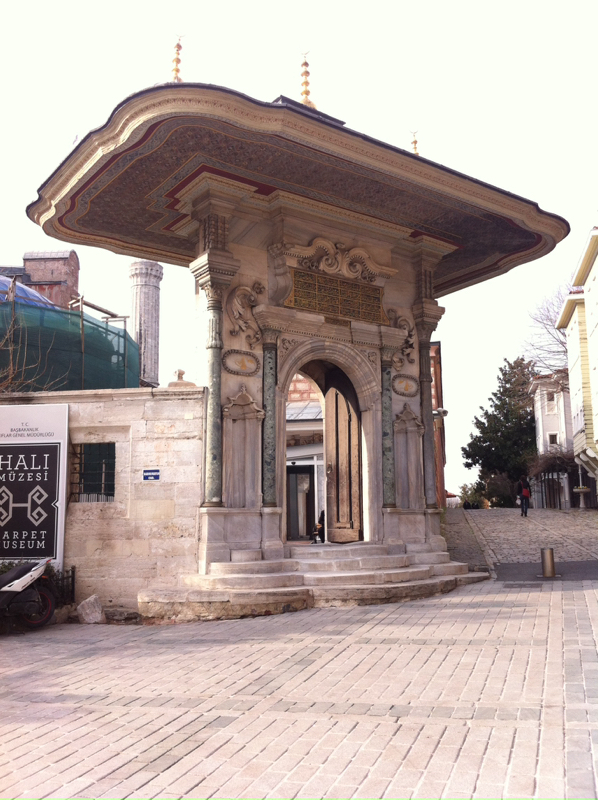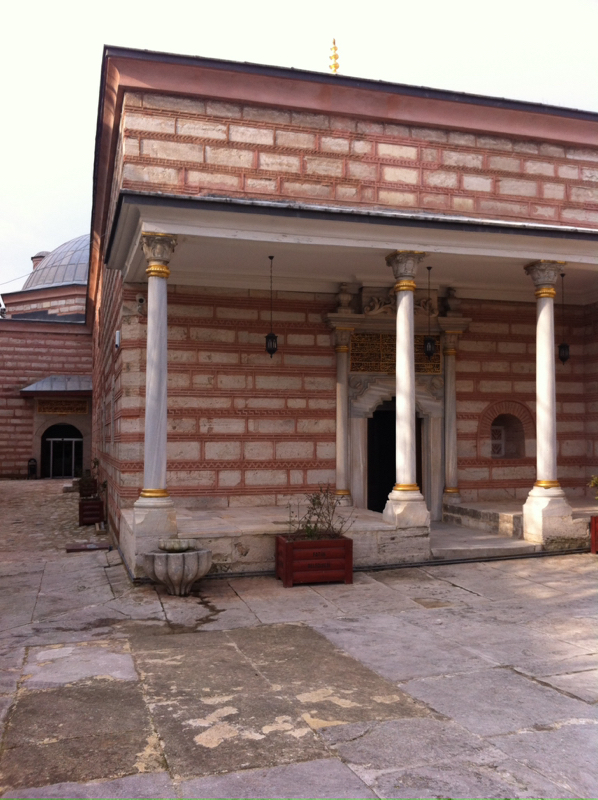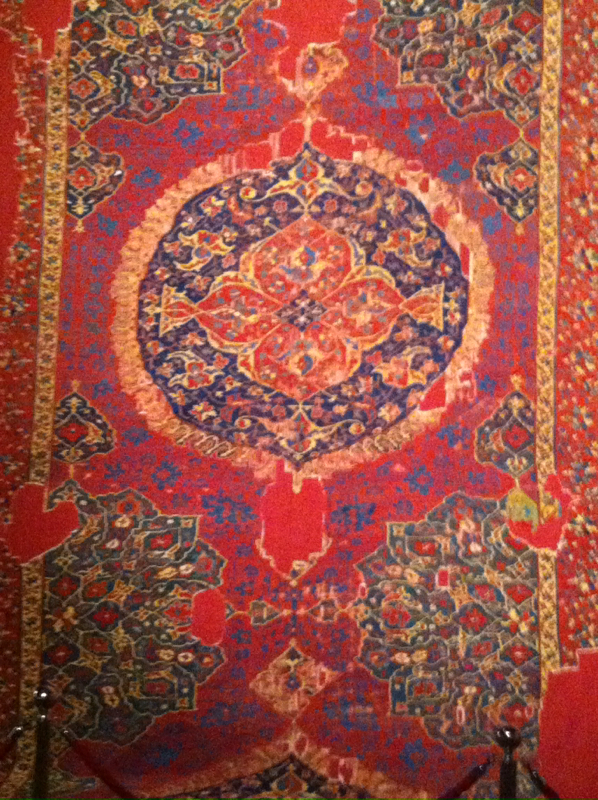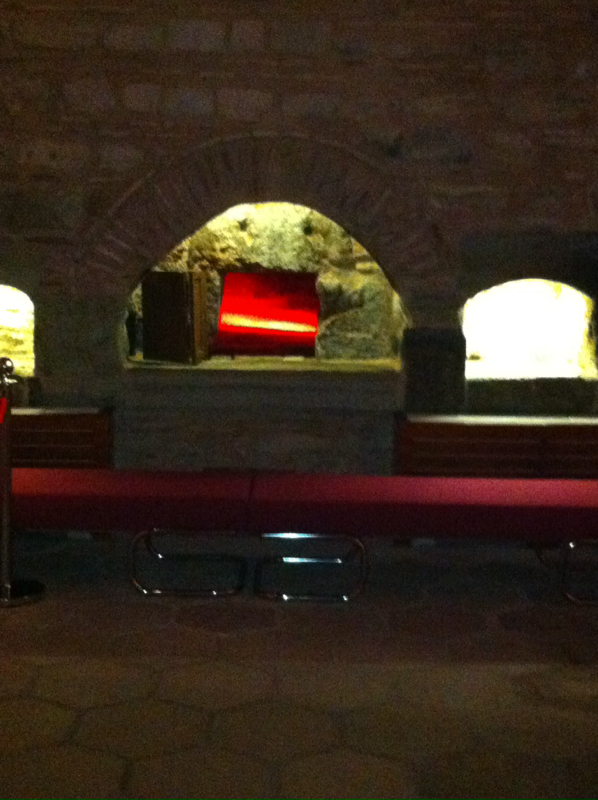We are the type of people that adore the rugs/carpets from all over this area (i.e. Turkish, Persian, Oriental). The art of carpet weaving, especially in Turkey, flourished almost uninterrupted from the 13th through the 19th centuries, with each era denoted by the various motifs that were prominent in the weavings. So a visit to the Hali (carpet) museum in Istanbul was must. The building that houses the museum was added to the Ayasofya between 1742-1743 and originally was an Imaret (soup kitchen). It provided bread and food stuffs to the poor, Madrasah students, and travelers. Comprised of three sections, the building housed a long narrow dinning hall, a cook house with several cement walled cooking-food preparation areas, and a bakery with ovens for bread making. We were a bit disappointed in the actual carpet display area. It really was not interactive, as found in other museums in Istanbul, and they only displayed carpets from the 17th and 18th centuries. While these carpets were beautiful, they seemed to have a lot more wear and tear to them than the much older carpets we saw in other museums. It was still interesting to see and we did learn a little about the different motifs used in the carpets.




 RSS Feed
RSS Feed
